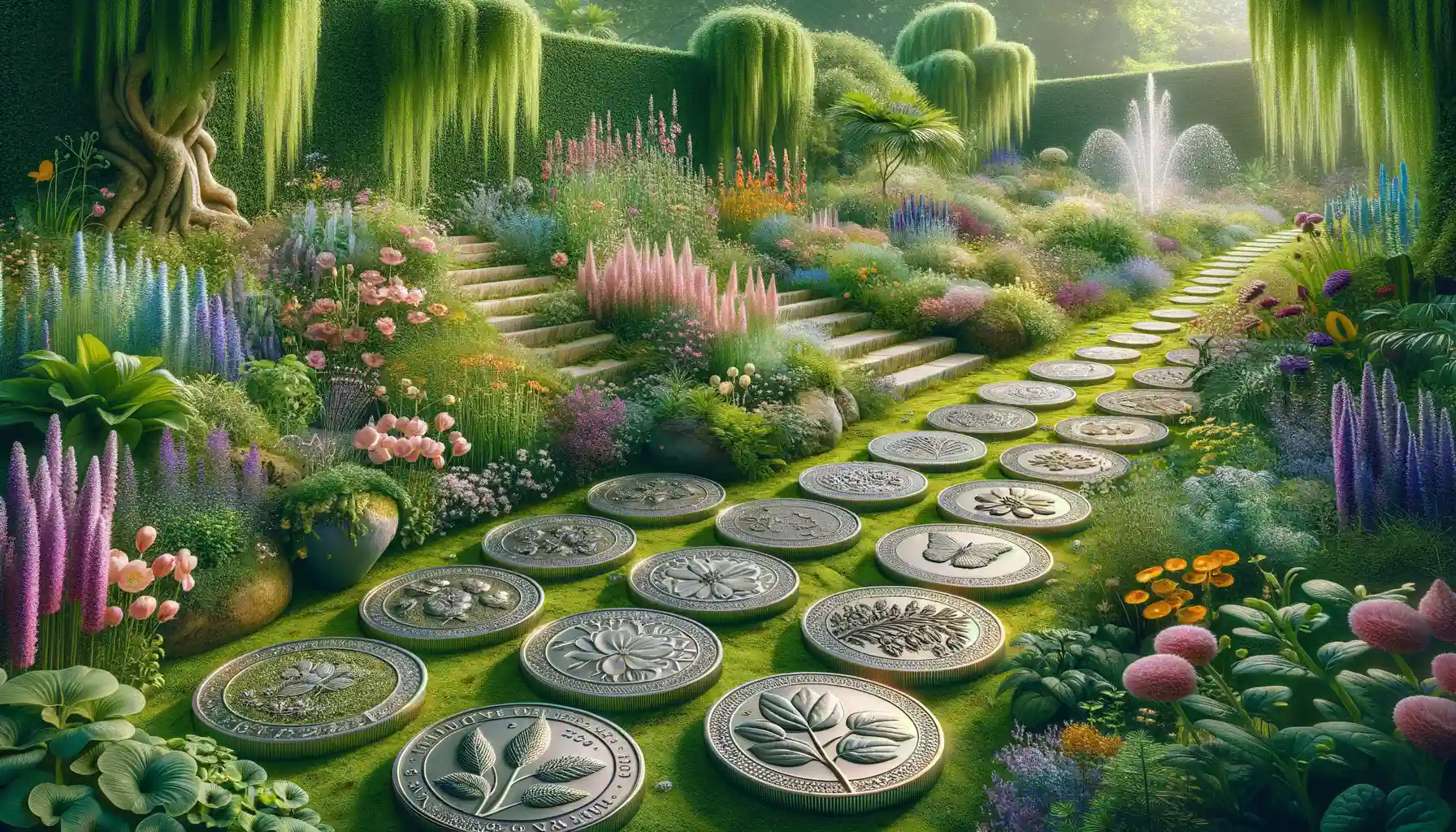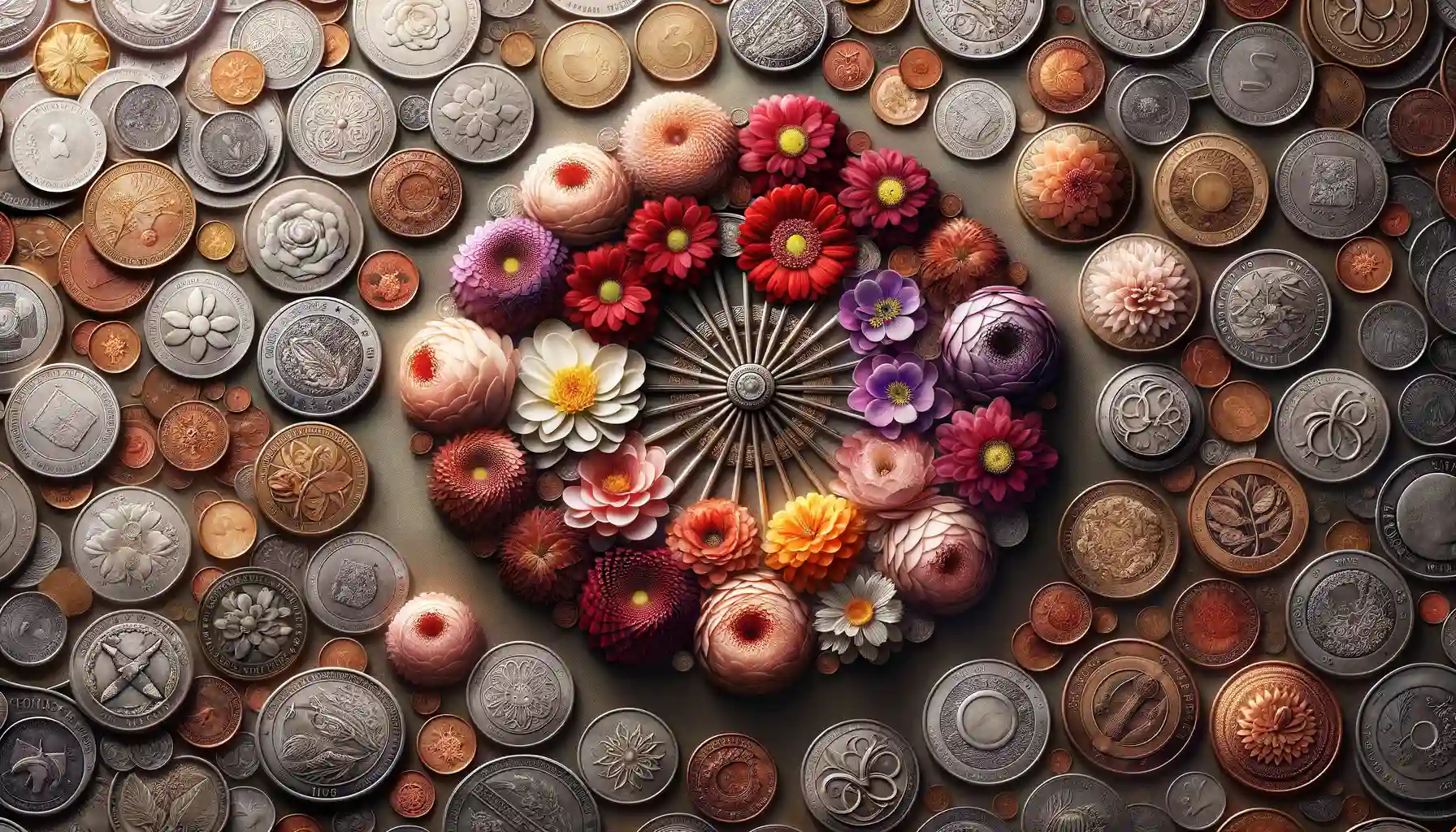Introduction to Flower Imagery in Ancient Coins
Take a journey back in time and picture yourself holding an ancient coin, its surface worn smooth by countless hands over centuries. Now, look closer—etched into the metal is a delicate flower, its petals blooming with purpose. What might seem like mere decoration actually holds a world of meaning. These tiny blossoms didn’t end up on coins by accident; they were carefully chosen, messages of power, hope, or divine favor encoded in their fragile forms.
The Language of Flowers in Metal
Imagine a rose: today, it might speak of romance, but on an ancient coin, it whispered of Aphrodite’s beauty and desire. Or the humble lily—it wasn’t just a flower; it was a sacred emblem of purity and rebirth, tied to goddesses like Hera or the Virgin Mary in later eras. Every bloom had its own story, often tied to the culture that minted the coin. In this way, these floral engravings became a universal language that transcended borders.
- A lotus bloom: A symbol of spiritual enlightenment in the East.
- An olive branch: A pledge of peace in war-torn regions of the West.
- The acanthus flower: A nod to enduring life and resilience.
More Than Decoration: The Power Behind the Petals
Think about it—why would rulers choose flowers, rather than something more “masculine,” like weapons or shields? Because the symbolism of a flower could disarm an opponent, charm citizens, and embody ideals without uttering a single word. Coins with flower imagery circulated through markets, temples, and homes, carrying these potent messages effortlessly. They were ancient Instagram posts, broadcasting identity and aspiration in the most elegant form.
Historical Significance and Cultural Context

Blooming Through Time: Flowers as Silent Witnesses of History
Coins, those humble artifacts of trade and power, have always carried whispers of the world they come from. When adorned with flower motifs, they transform into time capsules, laden with stories of kingdoms, cultural ideals, and even personal struggles. Flowers on ancient coins weren’t just for decoration—they were statements. They shouted royalty, whispered of divine favor, and murmured promises to the gods.
Take, for example, the ancient Greek coin featuring the lotus—a flower sacred to Egyptian culture but adopted by the Greeks as a symbol of rebirth and enlightenment. It’s a subtle nod to the interconnectedness of civilizations. These are not random embellishments; they are purposeful, almost poetic choices that echoed the socio-political fabric of their time.
- In Persia, the rose was struck onto coins to embody beauty and impermanence.
- In Roman times, olive branches, often paired with floral engravings, represented peace hard-won through war.
Each floral design captured an essence—a fleeting moment in history. Imagine holding such a coin today. You’re not just clutching metal but touching the hopes and philosophies of an ancient era, frozen in bloom.
Symbolic Meanings of Specific Flowers on Coins
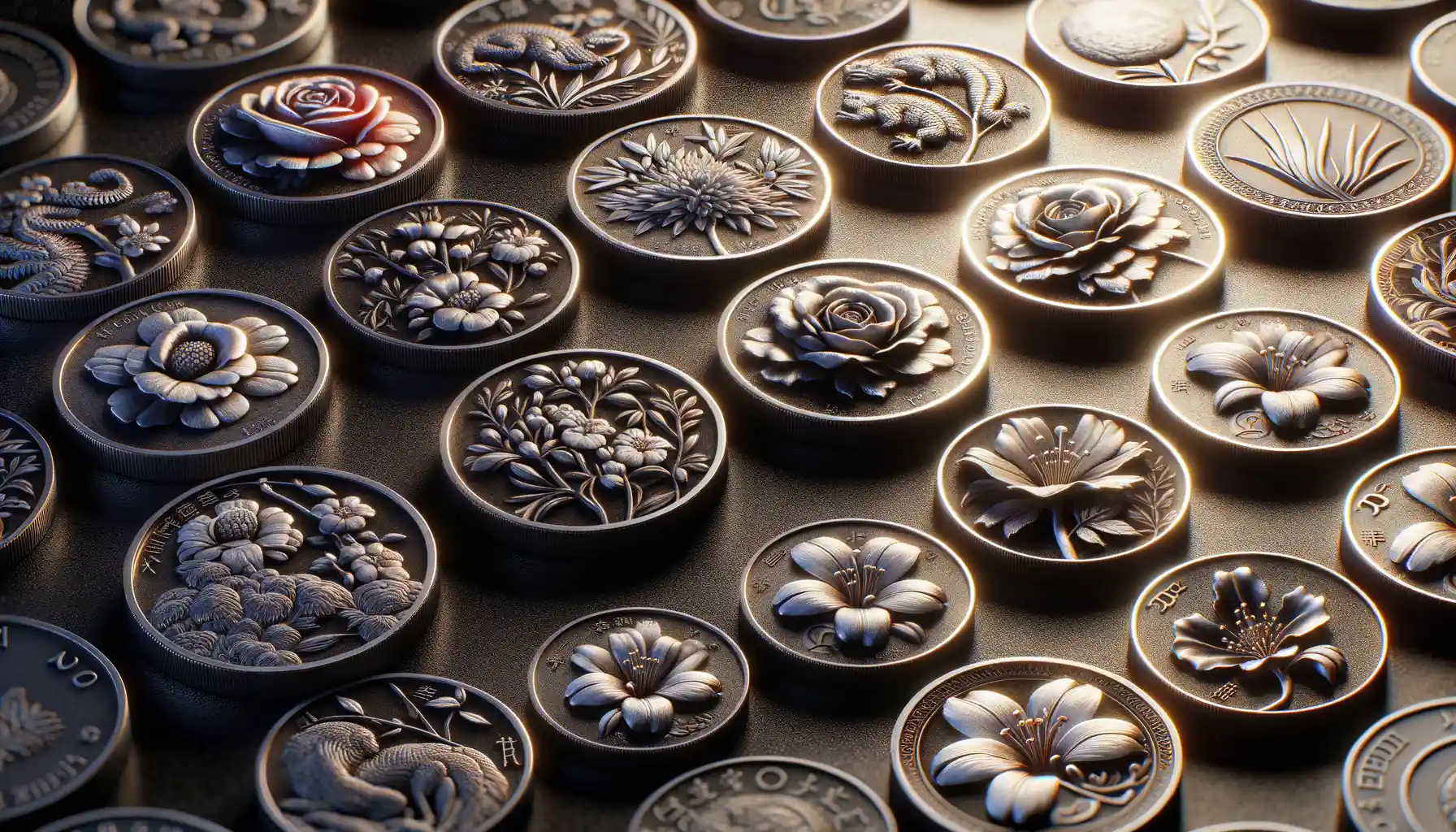
The Whispered Messages of Botanical Coins
Step into the world of ancient coins, and you’ll find more than monetary value; these tiny discs often carried whispers of their culture’s soul. Take, for instance, the delicate imagery of flowers etched into their surfaces—these were not just ornamental but encoded with meaning, a secret language for those who could interpret it.
Some flowers symbolize power. The **lotus**, frequently gracing coins from ancient India, wasn’t just a pretty face; it stood for **purity rising above adversity**. A potent metaphor, wouldn’t you agree? The **poppy**, seen on Roman denarii, hinted at both agriculture and sleep—a nod to Rome’s reliance on grain and perhaps a wink toward its burgeoning empire’s dreams of eternal dominance.
- The olive branch flower: A symbol of peace and victory, it crowned Greek coins and whispered promises of prosperity.
- The rose: Found on Persian coinage, often associated with love and mysticism, reminding us of beauty’s fleeting nature.
These floral emblems weren’t chosen randomly; they were deliberate, almost like a poet choosing every word for its resonance. Each bloom on a coin was a subtle but powerful proclamation—a nation’s hopes, values, or even its ambitions captured in petals. Who knew metal cold as history could feel so alive?
Techniques and Artistic Depictions of Flower Motifs
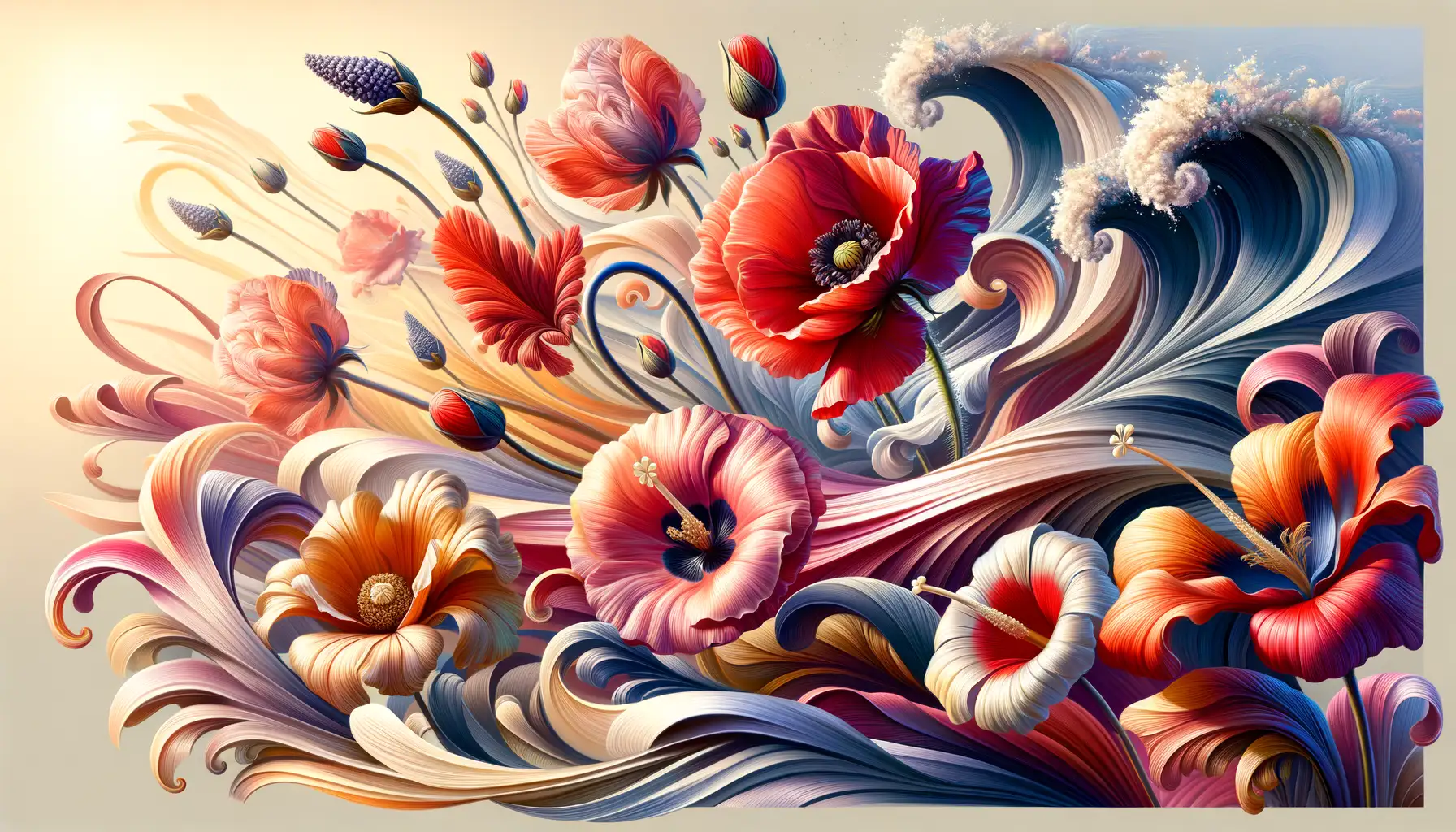
Artistry Blooming from Metal: The Intricacies of Flower Designs
When you think of ancient coins, you might picture stern rulers or bold emblems, but pause for a moment—imagine instead a delicate flower, engraved with near-magical precision onto cold metal. These intricate floral motifs weren’t just etched on a whim; they were expressions of emotion, belief, and identity, crafted with skillful hands and artistic ingenuity.
The techniques behind these designs? Breathtaking. Craftsmen employed methods like die engraving, where tools as fine as needles carved petals into coin molds. Some techniques even involved layering textures to create an almost three-dimensional effect. The lotus on Indian coins, for instance, seems to rise from the surface, as if ready to unfurl.
- Incised outlines: For clean, bold flower shapes that stood the test of time.
- Punched details: Minute dots and lines to mimic veins or delicate petal folds.
And let’s not forget the artistry itself! Fluid curves of Greek peonies captured nature’s wild beauty, while Roman depictions of laurel blooms had a structured dignity, much like their empire. Each motif feels alive—proof that even in antiquity, art was never held hostage by material limitations.
Modern Interpretations and Legacy of Ancient Flower Symbolism
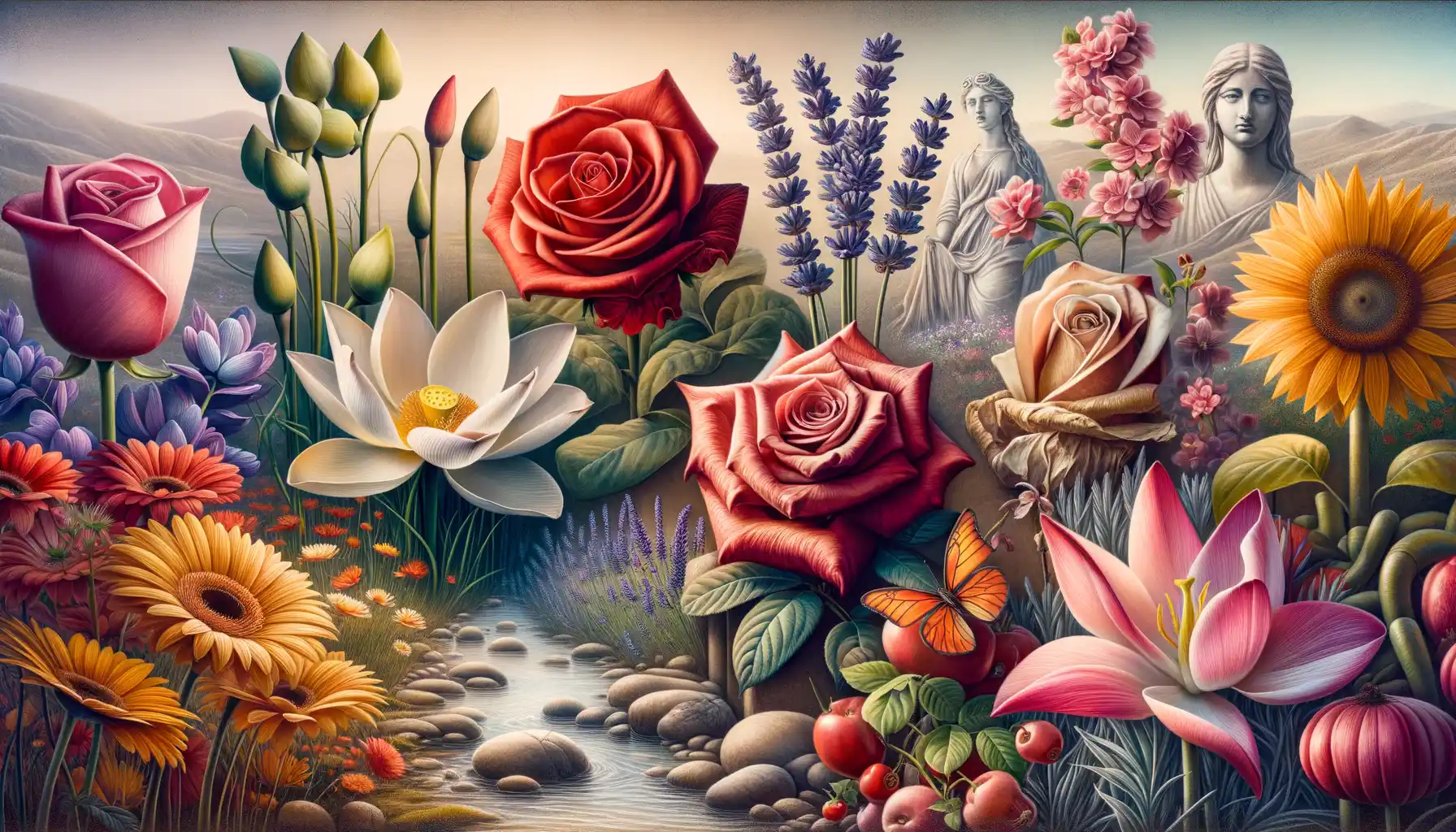
Reimagining Ancient Blooms in Today’s World
Ancient coins may have been small, but their floral designs whispered grand stories of power, values, and emotion. Fast forward to today, and it’s fascinating how these delicate symbols still resonate. Think about a simple lotus etched into a coin thousands of years ago—back then, it represented purity and rebirth. Today, doesn’t it stir something timeless in you? A sense of peace, harmony, or perhaps a creative spark?
Modern artists and designers often reimagine these ancient motifs in ways that feel strikingly personal yet universal. You’ll spot echoes of them in everything from jewelry inspired by antique coin patterns to tattoos that merge classical charm with contemporary flair.
- Rose motifs: Once emblems of power in Greek coins, now they adorn fashion lines, symbolizing resilience and love.
- Lilies: Regal in Roman times, their clean beauty is now a staple in logos and graphic design, often signifying elegance.
These ancient blooms aren’t just relics—they’re living, breathing symbols, connecting our modern aesthetics to ancient worlds. Don’t you love how history sneaks into the everyday, hidden in plain sight? It’s like an ongoing conversation across centuries through petals and stems.
The Lasting Imprint of Petals on Perception
There’s an emotional depth to these flower motifs that goes beyond mere visuals. Coins may have ceased to carry this kind of ornamentation, but their influence is thriving in unexpected places. Look at how the digital world celebrates these designs: emojis resembling flowers once depicted on coins, Instagram creators transforming imagery into viral artworks, or even video game graphics featuring ancient-inspired floral flourishes.
The idea of imbuing objects with such meaning feels strikingly contemporary. Imagine gifting someone a vintage pendant shaped like a lotus or rose, not just for its beauty but for the message it carries—a nod to cultures that valued symbolism as much as we value innovation today. These ancient blossoms remind us that, sometimes, the most vibrant legacies aren’t written in books—they bloom, quietly, through time.

